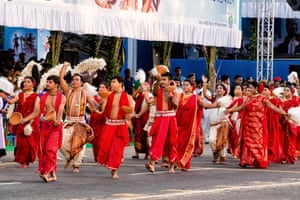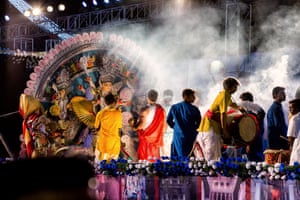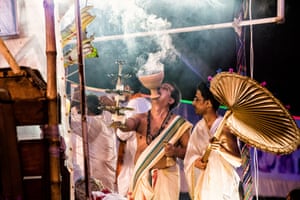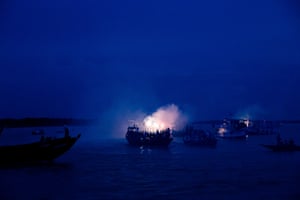Kumari puja at Belur Math, headquarters of the Ramakrishna Math and Mission. This ritual is usually observed on the seventh day of the festival, with an unmarried girl being worshipped symbolically as Goddess Durga.

A monk at Belur Math. The Ramakrishna Math and Mission was founded by Swami Vivekananda, a chief disciple of Ramakrishna Paramahamsa.
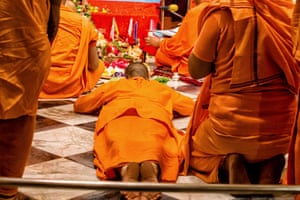
Devotees praying on the eighth day of the festival. It is marked by a grand evening arati (ritual of invocation of the goddess) on what is the most important day of the festival.

The goddess is offered food and sindoor (vermillion) as part of the preparation of her final journey from the pandal (temporary tent erected for Durga Puja) to the river.
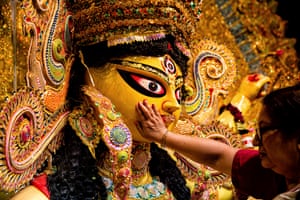
Married women mark each other with vermillion after offering the same to goddess Durga. This means the end of the 10-day festival and the devotees bid adieu to the goddess, who then returns to her abode in the Himalayas.
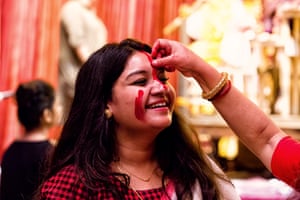
-
Women dance during a procession, part of the immersion ritual, as the goddess makes her way from the temporary structures that are erected all over the city.
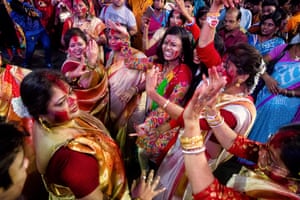
-
A traditional Bengali dance performed as part of the Immersion Carnival, which showcases the best statues/idols during each Durga puja.
